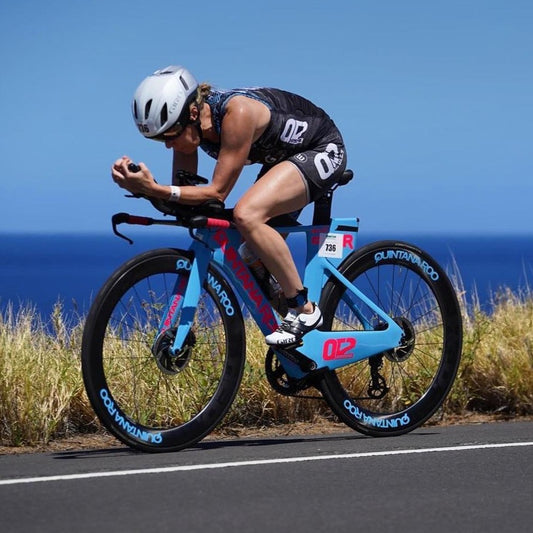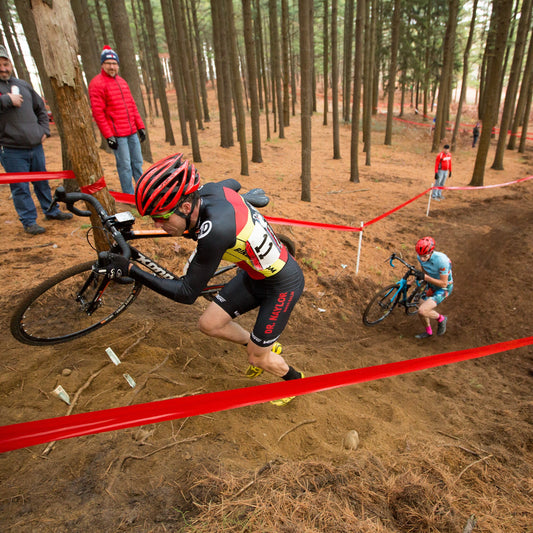The above presentation is best viewed on a computer.
Direct link to the above presentation notes - HERE
______________________________________________________
In the world of endurance coaching, the difference between good and great often comes down to one thing: structure. While many coaches understand the fundamentals of training prescription, those who consistently develop champions have mastered the art and science of periodization—specifically, block periodization. This approach has revolutionized how we prepare athletes for peak performance, allowing for targeted physiological adaptations while managing fatigue and optimizing race-day readiness.
What Is Block Periodization?
Block periodization is a training model that organizes an athlete's season into specialized phases or "blocks," each with a distinct focus and purpose, as defined by the athletes physiological and/or practical needs. Unlike traditional linear periodization that attempts to develop multiple capacities simultaneously, block periodization concentrates training stimulus on specific physiological systems for shorter periods (typically 2-6 weeks), creating more profound adaptations while reducing the risk of overtraining.
By isolating training focus into distinct blocks, we create the physiological conditions for maximal adaptation in targeted systems, based upon the athlete’s specific needs.
The Five Core Training Blocks
A comprehensive block periodization system for endurance athletes typically includes five fundamental block-types, each serving a specific purpose:
1. Base/Durability Block
Purpose: Build foundational aerobic capacity, structural resilience, and training rhythm.
- Ideal for: Athletes just returning to training; early-season preparation; post-injury comeback; or those with poor fatigue resistance, relative to their targeted race distance
- Key metrics: CTL (Chronic Training Load) below race-ready targets, inconsistent training history
- Typical duration: 4-8 weeks
- Primary workout types: Long aerobic efforts (65-75% of CP/CS), progressive duration runs/rides, technical skill development
- Exit criteria: Stable CTL for 2+ weeks, clean HR decoupling, consistent training adherence
2. Build/TH Block
Purpose: Raise aerobic threshold, improve efficiency, and lift the "floor" of sustainable performance.
- Ideal for: Athletes with CP/CS less than 85% of VO₂ Max power/pace, those with short time-to-exhaustion at threshold
- Key metrics: CP:VO₂Max ratio below 85%, stable base training complete
- Typical duration: 4-6 weeks
- Primary workout types: Sweet Spot intervals (88-92% CP), tempo progressions, sub-threshold endurance work
- Exit criteria: CP:VO₂Max ratio approaches 85-90%, time-to-exhaustion (TTE) extends past 45 minutes
3. VO₂ Max Block
Purpose: Raise the aerobic ceiling by increasing maximal oxygen uptake and expanding capacity for high-intensity repeatability.
- Ideal for: Athletes with CP/CS already at 88% or more of VO₂ Max (efficient but limited by ceiling), those needing higher top-end power
- Key metrics: Strong threshold power/pace but limited high-end capacity
- Typical duration: 2-4 weeks (rarely longer due to high strain)
- Primary workout types: 30/30s intervals, 3-5 minute power intervals at 105-120% of CP/CS, progressive VO₂ Max sets
- Exit criteria: Improved power at VO₂ Max with no regression in CP/CS
4. Specificity Block
Purpose: Convert aerobic fitness into race-ready execution through simulation of race conditions, refining pacing, and sharpening race-day skills.
- Ideal for: Athletes within 6 weeks of a key event, those with solid physiological foundation needing race-specific preparation
- Key metrics: 4-6 weeks pre-race, good physiological metrics, race demands well understood
- Typical duration: 2-5 weeks depending on race distance and taper strategy
- Primary workout types: Race pace simulation, course-specific intervals, nutrition rehearsal, technical practice
- Exit criteria: Confident at race pace, fueling plan dialed in, technical skills sharp
5. Rebuild/Reset Block
Purpose: Restore readiness, recalibrate load tolerance, reduce fatigue, and reintegrate training rhythm.
- Ideal for: Post-race recovery, athletes showing signs of overreaching, after illness, or following high-strain training blocks
- Key metrics: Prolonged negative TSB (Training Stress Balance), poor HRV (Heart Rate Variability), motivation dip
- Typical duration: 1-3 weeks
- Primary workout types: Recovery aerobic work, short Z1 sessions, strength/rehab, mental reset activities
- Exit criteria: Restored motivation, improved recovery markers, readiness for structured training
The Science Behind Block Effectiveness
The effectiveness of block periodization is grounded in understanding of physiological adaptation. Each block targets specific systems:
- Base/Durability blocks primarily enhance mitochondrial density, capillarization, and muscular endurance
- Build/TH blocks improve lactate clearance capacity and metabolic efficiency at sub-maximal intensities
- VO₂ Max blocks target central cardiovascular adaptations (heart stroke volume, oxygen transport, neural recruitment)
- Specificity blocks refine neuromuscular coordination, pacing sense, and metabolic efficiency at race pace
- Rebuild/Reset blocks allow for super-compensation and restoration of hormonal balance
By concentrating training stimulus on one primary system at a time, we avoid the interference effect that can occur when targeting multiple adaptations simultaneously. This focused approach leads to more profound physiological development in each system.
Block Selection and Sequencing
One of the most critical skills for coaches implementing block periodization is knowing which block to assign and when. This decision should be driven by multiple data points:
Timing-Based Rules
- If the athlete is fewer than four weeks into their current macro-cycle → assign a Base/Durability block
- If the athlete is six weeks or fewer from their key event → assign a Specificity block
- If both conditions above are true → prioritize Specificity
Physiological Metrics
- Calculate the ratio of Critical Power to power at VO₂ Max (or Critical Speed to pace at VO₂ Max for running)
- If the ratio is < 0.85 → assign a Build/TH block
- If the ratio is > 0.88 AND the most recent block was NOT a VO₂ Max block → assign a VO₂ Max block
- If the ratio is between 0.85-0.88 → consider the athlete's primary limiter (durability vs. execution)
Recovery Status
- Negative TSB for extended periods, declining HRV, or poor subjective markers → consider a Rebuild/Reset block
- Strong recovery capacity with high training availability → can handle higher strain blocks (VO₂ Max)
Advanced Application: Mixed Block Approaches
For multi-sport athletes like triathletes, a sophisticated approach involves applying different blocks to different disciplines simultaneously. This allows for precise targeting of sport-specific limiters while managing overall systemic fatigue.
For example:
- An athlete with solid bike fitness but lagging run durability might use a Specificity block for cycling while implementing a Base/Durability block for running
- A post-injury athlete might use a Rebuild/Reset block for the affected discipline while maintaining Build/TH or VO₂ Max work in unaffected sports
This mixed approach requires careful monitoring of total training load and systemic fatigue but can lead to more precise development across disciplines.
Practical Benefits for Coaches
Implementing block periodization offers numerous advantages for endurance coaches:
1. Clear Decision Framework
Block periodization provides a systematic approach to training prescription, reducing guesswork and improving consistency across athletes. The clear exit criteria for each block create objective milestones for progression.
2. Improved Communication
When athletes understand which block they're in and why, compliance and buy-in improve dramatically. Explaining that "we're in a VO₂ Max block to raise your aerobic ceiling" gives context to the challenging intervals they're performing.
3. Better Fatigue Management
By concentrating similar training stimuli within blocks, recovery can be optimized around specific stressors rather than attempting to recover from multiple types of fatigue simultaneously.
4. Precise Peaking
The block structure allows for systematic build-up toward key events, with Specificity blocks timed to coincide with final race preparation.
5. Individualized Progression
Athletes can progress through blocks based on their unique adaptation rates and limiters rather than following a one-size-fits-all calendar approach.
Implementation Guidelines for Coaches
1. Establish Baseline Metrics
Before assigning blocks, collect critical data:
- Critical Power/Speed and VO₂ Max assessments
- Training history and current CTL
- Race calendar with prioritized events
- Known limiters and strengths
2. Utilize Well-Defined Block-Type Principles
Understand training approach(es) for each block type that include:
- Weekly TSS (Training Stress Score) targets
- Intensity distribution guidelines
- Key workout types
- Recovery protocols
3. Define Clear Transitions
Establish objective criteria, with your athletes, for when to transition between blocks, including:
- Physiological markers (CP:VO₂ Max ratio changes, power curve improvements)
- Calendar-based triggers (race proximity)
- Athlete readiness metrics (HRV, subjective feedback)
4. Monitor and Adjust
Implement regular assessment to determine if the current block is still appropriate:
- Frequent check-ins on key metrics
- Regular retesting of critical physiological markers
- Adjustments based on rate of adaptation
Common Pitfalls to Avoid
1. Block Duration Errors
Some blocks require minimum durations to create meaningful adaptations. For example, a one-week VO₂ Max block is unlikely to create lasting central adaptations. Conversely, extending high-strain blocks like VO₂ Max beyond 4 weeks often leads to diminishing returns and increased injury risk.
2. Improper Sequencing
Certain block sequences create more effective adaptation pathways. For instance, a Build/TH block typically produces better results after a solid Base/Durability block has established resilience and fatigue resistance. Similarly, VO₂ Max work is most effective when threshold capacity is already well-developed.
3. Ignoring Recovery Needs
Higher-strain blocks (particularly VO₂ Max) require proportionally more recovery. Failing to account for this can lead to accumulated fatigue and diminished training quality.
4. One-Size-Fits-All Application
While the block framework provides structure, the specific implementation must be individualized based on the athlete's physiology, psychology, life circumstances, and overall stress budget.
Conclusion: The Strategic Advantage of Block Periodization
Block periodization represents one of the most powerful tools in an endurance coach's arsenal. By providing a systematic framework for training prescription that aligns with how the human body actually adapts, it creates the conditions for optimal performance development.
The beauty of this approach lies in its balanced blend of structure and flexibility. The block framework provides clear guidelines for training focus, while the individual implementation allows for personalization based on each athlete's unique needs and constraints.
Mastering block periodization isn't just about understanding the science—it's about developing the judgment to know which block an athlete needs, when they need it, and how to implement it effectively within their specific context. This combination of scientific foundation and coaching art is transformative.
By embracing block periodization, you give your athletes the gift of purposeful training—where every session contributes to a larger, coherent plan designed to bring them to their physiological and performance peak exactly when, and in a way that matters most.





